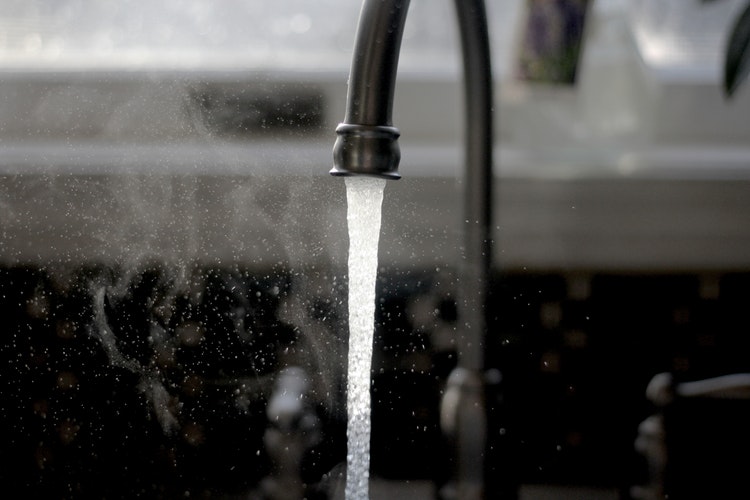Feb 12, 2019

Water pressure is something homeowners often forget about until a problem arises. You may notice a dip when multiple plumbing fixtures are being used at once, but these one-off changes in water pressure aren’t usually cause for concern. Homeowners should pay attention, however, if water pressure drops suddenly and inexplicably, or if low water pressure is an ongoing problem that’s getting worse over time.
If low hot water pressure is giving you and your family grief, it’s time to investigate. While one troubling plumbing fixture can be an easy fix for your water pressure woes, widespread low water pressure can indicate serious plumbing problems that should be taken care of quickly.
Let’s explore some of the reasons why you may be experiencing low water pressure in your home:
Common Causes of Low Hot Water Pressure
1. Water Valve Problems
Water is delivered to your home’s plumbing system from your city or county main water supply. This delivery is controlled by two major valves: the water meter valve and the main shutoff valve.
Water Meter Valve
The water meter valve can be found next to the water meter on the main water supply pipe serving your home. This is typically located on an exterior wall of the house, in an underground box near your front curb, or even in your basement.
Low water pressure can sometimes indicate that the water meter valve is not fully open, especially if you’ve recently had work done on your home. It’s possible that when the water was turned back on following home renovations, the water meter valve was left partially closed, resulting in lower water pressure. You can tell that the water meter valve is fully open when the handle is parallel with the pipe.
Main Shutoff Valve
Your home’s main shutoff valve can be found inside your home where the main water supply line connects to your internal plumbing system, often in a utility closet or in the basement. Like the water meter valve, the main shutoff valve can sometimes be left partially closed after plumbing work has been done.
There are two different types of main shutoff valves that may be present in your home: a ball valve and a gate valve. A ball valve has a lever, which must be parallel to the pipe to ensure the valve is fully open. A gate valve has a wheel handle, which must be turned all the way to the left in a counterclockwise direction for the valve to open entirely.
2. Corroded Pipes
If you live in an older home, low water pressure can also be a result of corrosion and scale buildup in old steel pipes, restricting water flow in your home’s plumbing system over time.
Since this is a problem that develops slowly over the years, you may not notice any significant difference in water pressure until the corrosion becomes severe, at which point your problem will likely get worse quickly.
Corroded pipes are the most serious cause of low water pressure and, unfortunately, the most expensive issue to fix because the only real solution is to replace your old plumbing system with new copper or plastic pipes.
3. Clogged Plumbing
You’ve checked to make sure that both water valves are fully open, and you know that the pipes in your home are relatively new. Now what?
Another cause of low hot water pressure could be a clog somewhere in your plumbing system. In order to determine if the cause of your low water pressure is a clogged pipe, you’ll need to call in a professional. Using video drain inspection technology, a licensed plumber can help you assess the situation and determine the right solution.
When it comes to remedying plumbing problems, you’re better off skipping the DIY methods. Plumbing repairs are challenging and can have a lot of unforeseen consequences. Improper plumbing repairs can even contaminate your water supply with harmful bacteria, so it’s probably a good idea to leave this task to the experts.
Read more: Here's Why You Should Avoid DIY Home Repairs
Clogged plumbing fixtures can also weaken water pressure. Rust and limestone buildup on shower heads and faucets can interfere with water flow as well as reduce water quality. If only one or two fixtures are experiencing low water pressure, this buildup is likely to blame. Check the affected fixtures to make sure openings are clean and clear of any obstructions. If you find a clogged faucet or shower head, clean it out or replace it with a newer model.
4. Pressure Regulator Malfunction
One last possible cause of low water pressure is a faulty pressure regulator, which reduces input pressure in your plumbing system to prevent damage to your pipes. A failing pressure regulator will result in significant spikes in water pressure.
If you’ve noticed a sudden, dramatic drop in water pressure, it could be due to a malfunctioning pressure regulator. To find out if the pressure regulator is causing your plumbing problem, you can attach a pressure gauge to an outdoor spigot and run the water to get a water pressure reading. Recommended water pressure is 52 to 75 pounds per square inch. If your water pressure tests outside of this range, you may need to replace your pressure regulator.
Call CroppMetcalfe to Diagnose Your Water Pressure Problems
If you’ve noticed a drop in your home’s water pressure and can’t figure out the source of the issue, contact CroppMetcalfe’s team of 5-Star Technicians. Our licensed plumbers can diagnose any plumbing problem and offer a solution that works best for you and your family.
Call 703-698-8855 to speak with a plumbing expert or schedule a service appointment online today.